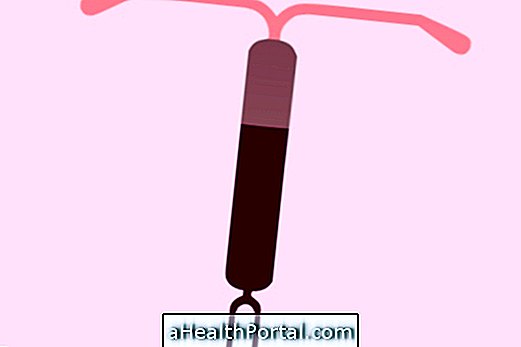The vaginal septum is a rare congenital malformation, in which there is a wall of tissue that divides the vagina and uterus into two spaces. Depending on how this wall divides a woman's reproductive system, there are two main types of vaginal septum:
- Transverse vaginal septum: the wall develops from side to side of the vaginal canal;
- Longitudinal vaginal septum: the wall goes from the entrance of the vagina to the uterus, dividing the vaginal canal and the uterus into two parts.
In both cases, the external genital region is completely normal and, therefore, most cases are not identified until the girl starts her menstrual cycle or has her first sexual experience, as the septum can prevent the passage of blood. menstruation or even intimate contact.

The vaginal septum is curable, requiring surgery to correct the malformation. Thus, if there is a suspicion of a malformation in the vagina, it is important to consult a gynecologist to confirm the diagnosis and start the best treatment, reducing discomfort.
Main symptoms
Most symptoms that may indicate the presence of a vaginal septum only appear when you enter puberty, which may include:
- Severe pain during the menstrual cycle;
- Absence of menstruation;
- Pain during intimate contact;
- Discomfort when using tampon.
In addition, in women with a transverse septum, it is still possible to experience a lot of difficulty during intimate contact, as it is usually not possible for the penis to make a full penetration, which may lead some women to be suspicious of a short vagina, for example. .
Many of these symptoms are also similar to those of endometriosis, but in these cases it is more common to experience heavy bleeding along with menstruation, in addition to pain when urinating or defecating, for example. However, the best way to confirm the diagnosis is to consult a gynecologist. See a more complete list of the symptoms of endometriosis.
How to confirm the diagnosis
Some cases of vaginal septum can be identified in the first consultation with the gynecologist, since it is often possible to observe the changes with just an observation of the pelvic region. However, the doctor may also order some diagnostic tests, such as transvaginal ultrasound or magnetic resonance imaging, especially in cases of transverse septum, which are more difficult to identify with observation alone.
How the treatment is done
When the vaginal septum does not cause any symptoms or discomfort for the woman, treatment is generally not necessary. However, if there are symptoms, the doctor usually recommends surgery to correct the malformation.
The easiest cases to treat are the transverse septum, in which it is only necessary to remove the portion of tissue that is blocking the vaginal canal. In the case of longitudinal septum, it is usually necessary to reconstruct the interior of the uterus so that only one cavity is formed.
Was this information helpful?
Yes No
Your opinion is important! Write here how we can improve our text:
Any questions? Click here to be answered.
Email in which you want to receive a reply:
Check the confirmation email we sent you.
Your name:
Reason for visit:
--- Choose your reason --- DiseaseLive betterHelp another personGain knowledge
Are you a health professional?
NoMedicalPharmaceuticalsNurseNutritionistBiomedicalPhysiotherapistBeauticianOther























